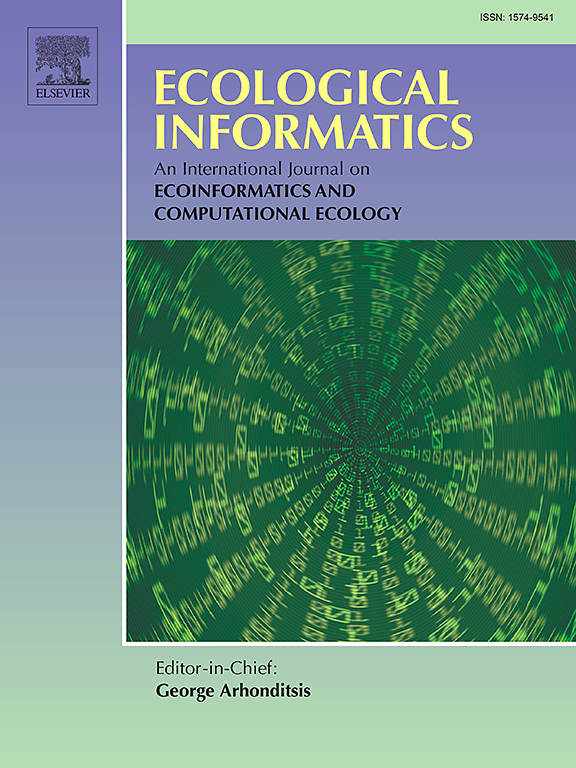An automatic identification method of common species based on ensemble learning
IF 5.8
2区 环境科学与生态学
Q1 ECOLOGY
引用次数: 0
Abstract
Camera traps are an important tool for animal resource surveys, allowing non-invasive wildlife image capture and providing essential data for species identification. However, the vast number of images generated requires significant manual effort for sorting, limiting its development in biodiversity studies. Deep learning offers a promising solution by accurately identifying species from large datasets, enhancing processing efficiency, and reducing costs. While existing deep learning methods have achieved significant success in species identification, they often struggle with accurately recognizing all species due to the class imbalance prevalent in camera trap datasets, which limits the application of deep learning models in biodiversity monitoring. This study proposed an ensemble learning method based on common species modeling to automatically identify common species, which constitute the majority of camera trap datasets. We utilized three base models: ResNet-18, ResNeXt-50, and ViT-Base to validate our method on the Snapshot Serengeti dataset. The experimental results showed that the performance of the ensemble learning method improved with the performance of the selected base model. When ResNeXt-50 was used as the base model, the recall and precision of all common species on the in-sample test set exceeded 98 % and 97 %, respectively, except for Gazelle Grants. The automation rate of the ensemble model was 80.67 %, and the omission error of rare species was 2.03 %. On the out-of-sample test set, all species except for Zebra, Buffalo, and Gazelle Grants had a recall of over 95 %. Apart from Gazelle Grants, the precision for the other species was above 90 %. The automation rate of the ensemble model was 72.27 %, and the omission error of rare species was 5.31 %. Our method achieved the automatic identification of common species, thus reducing the workload of manual sorting. In addition, our approach separated rare species images from the dataset by identifying common species, minimizing potential omission errors. As a result, ecologists focusing on rare species only need to handle rare species images that only represent a small proportion of the dataset.
求助全文
约1分钟内获得全文
求助全文
来源期刊

Ecological Informatics
环境科学-生态学
CiteScore
8.30
自引率
11.80%
发文量
346
审稿时长
46 days
期刊介绍:
The journal Ecological Informatics is devoted to the publication of high quality, peer-reviewed articles on all aspects of computational ecology, data science and biogeography. The scope of the journal takes into account the data-intensive nature of ecology, the growing capacity of information technology to access, harness and leverage complex data as well as the critical need for informing sustainable management in view of global environmental and climate change.
The nature of the journal is interdisciplinary at the crossover between ecology and informatics. It focuses on novel concepts and techniques for image- and genome-based monitoring and interpretation, sensor- and multimedia-based data acquisition, internet-based data archiving and sharing, data assimilation, modelling and prediction of ecological data.
 求助内容:
求助内容: 应助结果提醒方式:
应助结果提醒方式:


